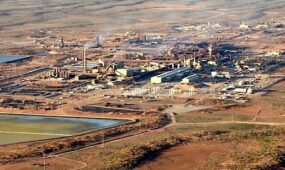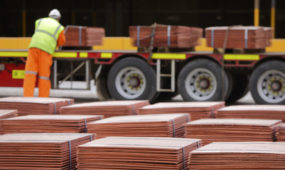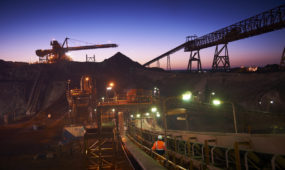Australia's highest-grade flake graphite deposit gains mining approval
Mining & Resources
A MINING lease has been granted to develop Australia’s highest-grade flake graphite deposit.

Sign up to receive notifications about new stories in this category.
Thank you for subscribing to story notifications.
Lincoln Minerals has been granted a 21-year lease for the 300-hectare Kookaburra Gully graphite project on South Australia’s Eyre Peninsula, which is also in the world’s top 10 deposits based on grade.
The shallow but high-grade resource, located 35 kilometres northwest of Port Lincoln, extends to at least 125m depth, remains open at depth and along strike, and hosts total Indicated and Inferred Mineral Resources of 2.20 million tonnes grading 15.1 per cent Total Graphitic Carbon (TGC). It also abuts the Lincoln-owned and Koppio graphite mine which, as a second potential source for the Kookaburra Gully mine, adds an Inferred Mineral Resource of 1.85 million tonnes at a grade of 9.8 per cent TGC into the overall project’s mining potential.
The company is targeting an output of up to 40,000 tonnes per annum of high-grade graphite concentrate from Kookaburra Gully for an initial mine life of at least seven years.
Lincoln Chairman Yubo Jin said the granting of the Mineral Lease was a key milestone that would allow the company to progress from “project explorer and developer to an emerging graphite producer, in an industry at the forefront of the growing global green energy market”.
The Kookaburra Gully application was lodged in October 2014.
Graphite has seen a resurgence in price in recent times due to increased demand from applications such as lithium-ion battery technology for electric cars and the novel substance graphene. It is also at the forefront of the growing global green energy market.
A proposal to build a solar thermal power station in Port Augusta, about 250km north of the Kookaburra Gully site, is being considered. If it goes ahead, the power station would require at least 17,000 tonnes of graphite. In the proposed Solastor system, a tower mounted, 10-tonne graphite solar thermal receiver is heated to 800°C and used to convert water to steam, which is then used to generate electricity in a steam turbine generator.
South Australia is home to more than 75 per cent of Australia’s JORC graphite resources, largely on Eyre Peninsula.
Lincoln Managing Director John Parker said the company would work closely with the South Australian Government, the District Council of Tumby Bay and the local community throughout the remainder of the approval process.
He said mine construction and production was targeted to commence in 2017.
Jump to next article



